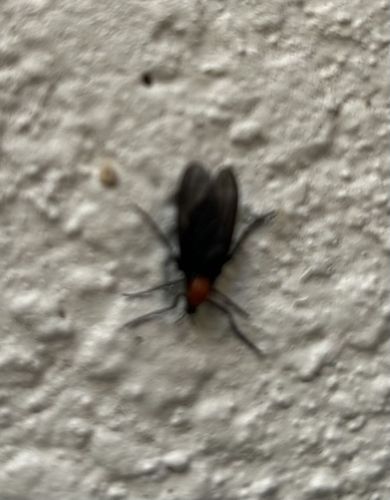Lovebug / March Fly
Scientific Name: Plecia nearctica
Order & Family: Diptera, Bibionidae
Size: Typically 6 to 9 mm (around 0.25 to 0.35 inches) in length.

Natural Habitat
Commonly found in grassy areas, fields, and urban landscapes, especially in the southeastern United States. They tend to congregate around roadways and areas with decaying vegetation.
Diet & Feeding
Adult lovebugs feed on nectar from various flowering plants. Larvae feed on decaying organic matter, such as dead leaves and grass, in the soil.
Behavior Patterns
Lovebugs are known for their mass emergence twice a year, typically in late spring (April-May) and late summer/early fall (August-September). They are often seen flying in tandem, with a male and female coupled together for mating. This copulation can last for several days, even during flight. They are attracted to exhaust fumes from vehicles and fermenting odors, which can lead to large swarms near roads.
Risks & Benefits
Lovebugs pose no direct risk to humans (they don't bite or sting). Their main nuisance is during their mass emergences when they can splatter on vehicles, reducing visibility and potentially damaging car paint if not washed off promptly due to their acidic body fluids. Environmentally, their larvae play a beneficial role in decomposing organic matter and enriching the soil.
Identified on: 9/19/2025